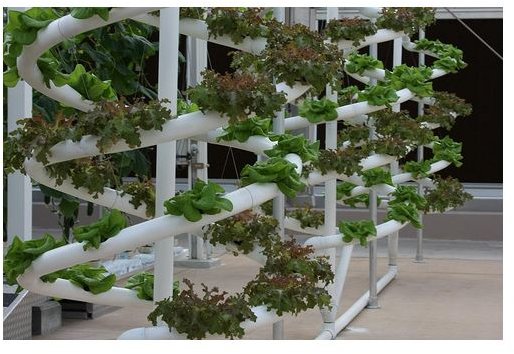How to Make Organic Hydroponic Fertilizer
Learning how to make homemade hydroponic organic fertilizer is just as easy as baking a cake. Each of the following recipes gives exact amounts of nutrients and ratios to mix with water. The first recipe is comprised of nutrients that can be found at local nurseries or hydroponic grow shops. This is a tweaked version of an industry standard mix that includes several trace elements.
Organic Recipe One – Traditional Recipe
Combine the following five ingredients in the following amounts in a mixing bowl:
- 15 ounces superphosphate
- 10 ounces potassium sulphate
- 10 ounces sodium nitrate
- 10 ounces calcium nitrate
- 5 ounces magnesium sulphate
Mix them thoroughly and set the mixing bowl to the side. In a separate mixing bowl combine the following trace elements:
- 1 ounce iron sulphate
- 1 teaspoon boric acid powder
- 1 teaspoon manganese sulphate
- 1/2 teaspoon copper sulphate
- 1/2 teaspoon zinc sulphate
Mix thoroughly and then crush the trace elements with a mortar and pestle. Once the mix has been ground down into a fine powder dump the powder in to the first mixing bowl. Stir the two together until they become a homogeneous mix. This completes the fertilizer. Apply at a ratio of ½ teaspoon per 100 gallons of water.
Organic Recipe Two – Gift From the Sea
This recipe is the simplest organic fertilizer that you could ever want to make. Seaweed is one of the most nutrient rich sources for plants on the planet. Creating a seaweed tea leaches the nutrients from the plant cells into a liquid form that can be utilized in a hydroponic system. Here’s how it’s done. Wrap six ounces of seaweed in cheesecloth and tie it off with a piece of string. Soak this bag in a five gallon bucket, in the sun, for four to five days. Add five teaspoons of Epsom salt to the mix (one teaspoon per gallon) to add the trace elements missing from the seaweed. The entire five-gallon tea can be added to the hydroponic reservoir or it can be added in one-gallon increments. One gallon of tea will fertilize a 100-gallon set-up for two days.
Organic Recipe Three – Farmers Friend
The third option for organic hydroponic fertilizer comes from a converted farmer that I spent a lot of time with as I learned the art of hydroponics. Being an old farmer he had his own fertilizer mix that he carried over from his traditional days. Here’s what he did to make is usable in a hydroponic setting.
Mix the following ingredients in a 5-gallon bucket:
- 4 pounds of seed meal
- 1 pound finely ground agricultural lime
- 1 pound gypsum
- 2 pounds dolomitic lime
- 1 pound of bone meal
- 1 pound kelp
Fill the bucket with water and stir it until it creates a thin mix. This mix is used at a ratio of six ounces per 100 gallons of water. This recipe works best in a large scale system but can be scaled back as long as the ratios are kept the same. The mix can be left in powdered form and used at a ½ teaspoon to 100 gallon ratio as well.
Organic Recipe Four – Compost Tea
If you are one of the purists in the organic community and you like to reuse and recycle as well, this compost tea recipe is for you. All of these items are things that you probably have in your home (excluding aquarium water) and all you need is a nice spot in a secluded part of your yard.
Create a compost heap or buy a composting bin and place it in an out of the way place. Add equal amounts of green and brown matter; green being grass clippings, vegetable scraps, green leaves, etc. brown being straw, dirt, dry yellow or brown leaves, paper and wood products, shredded newspaper, dryer lint or straw. Turn the heap every day for two to three weeks or until a nice compost has matured. Steep two large shovelfuls of compost in five gallons of water for three days. Distilled water is nice but aquarium water is even better (as long as it hasn’t been chemically treated). This fertilizer will not be chemically consistent so the dosage will depend on the contents of your compost heap. This is more of a “by feel” fertilizer that can be added in various rates depending on how it works with your plants. A good place to start is one gallon of compost tea per 100 gallons of reservoir.
Now that you know how to make homemade hydroponic organic fertilizer, get started with any of these recipes for your hydroponic set-up. It will be up to you to choose the one that best fits your particular growing needs.
References
- Image courtesy of Anthony Pranada @ FlickR http://www.flickr.com/photos/antonypranata/4094451452/sizes/m/in/photostream/
- Other information from author experience.
- Solomon, Steve. “A Better Way to Fertilize Your Garden: Homemade Organic Fertilizer - Organic Gardening - MOTHER EARTH NEWS.” Organic Gardening, Modern Homesteading, Renewable Energy, Green Homes, DIY Projects – MOTHER EARTH NEWS. Web. 10 Aug. 2011. http://www.motherearthnews.com/Organic-Gardening/2006-06-01/A-Better-Way-to-Fertilize-Your-Garden.aspx
